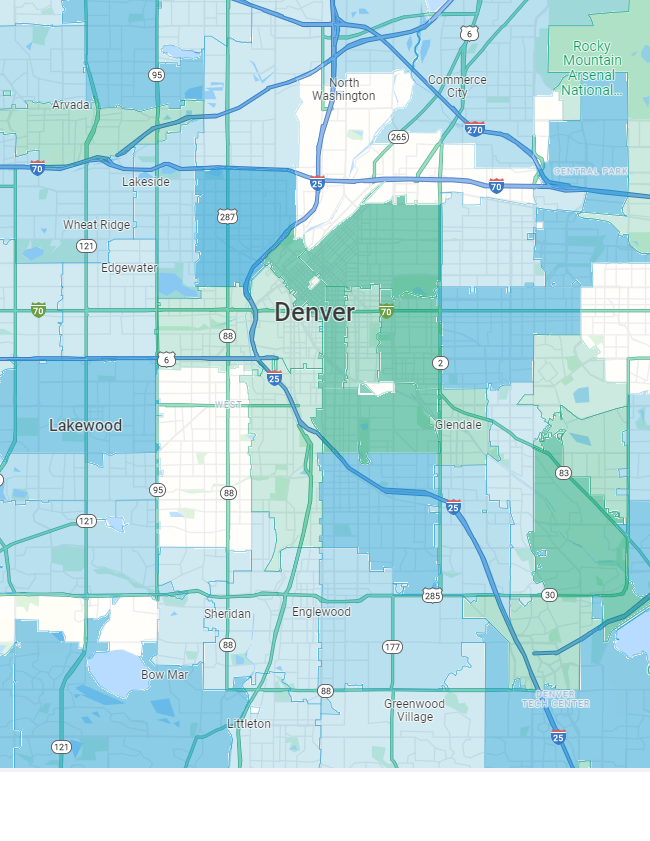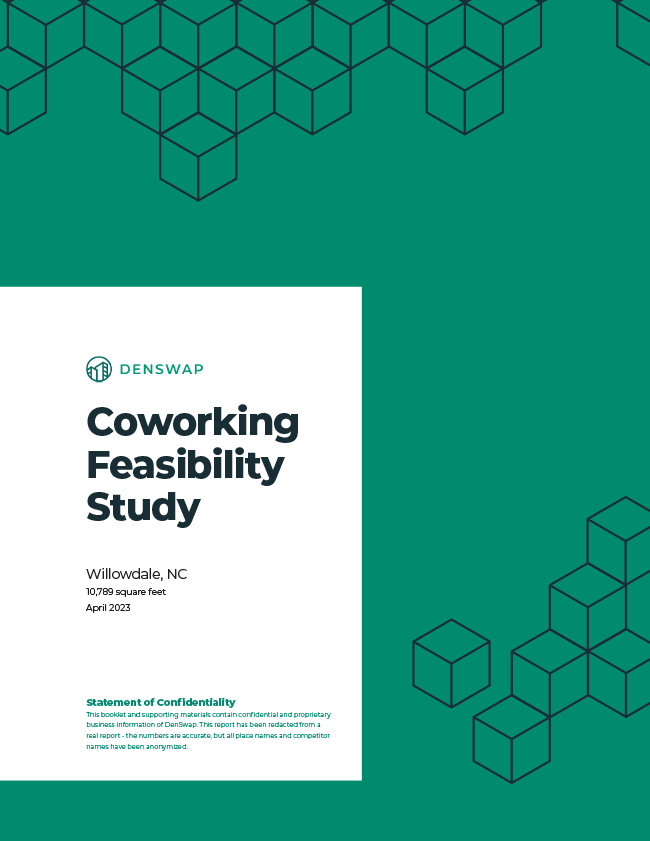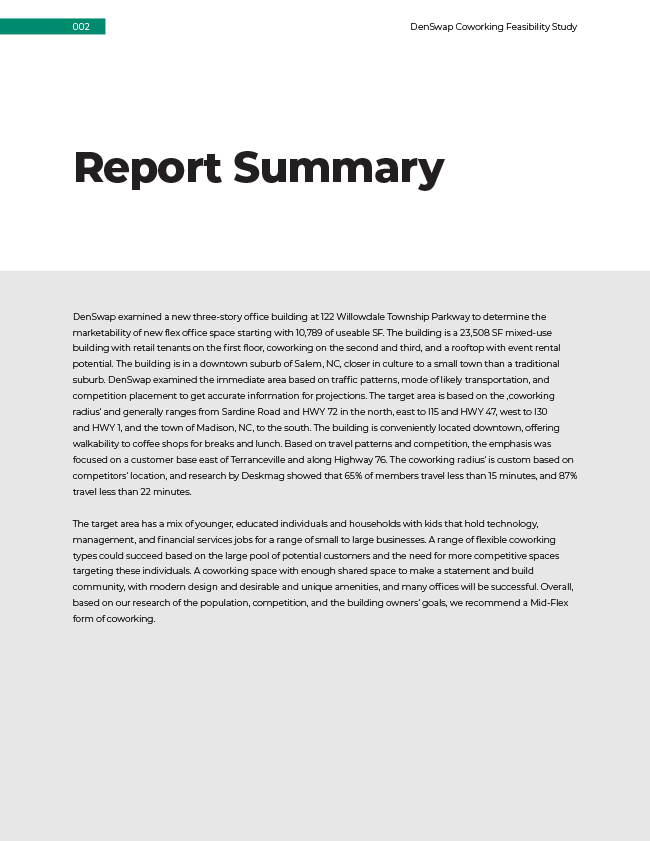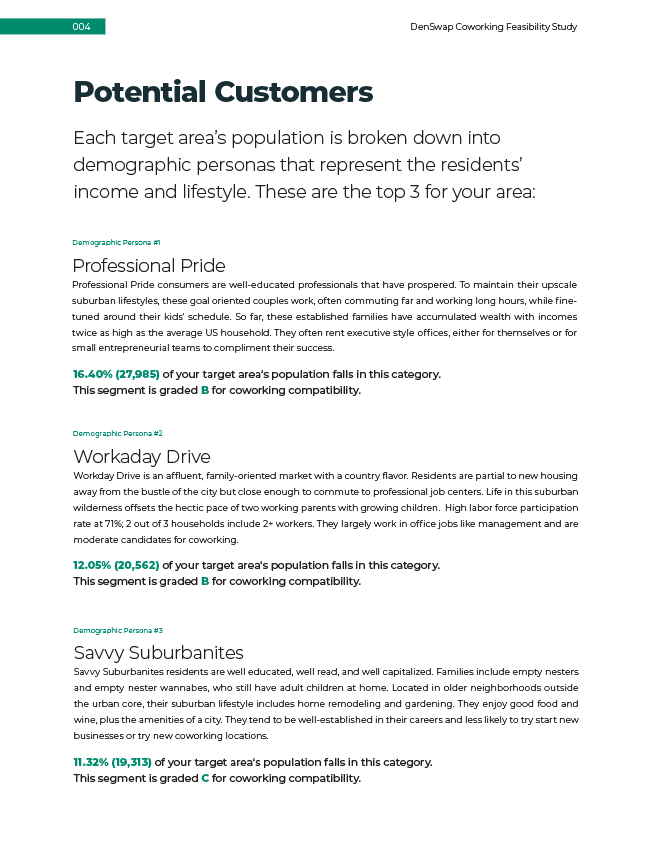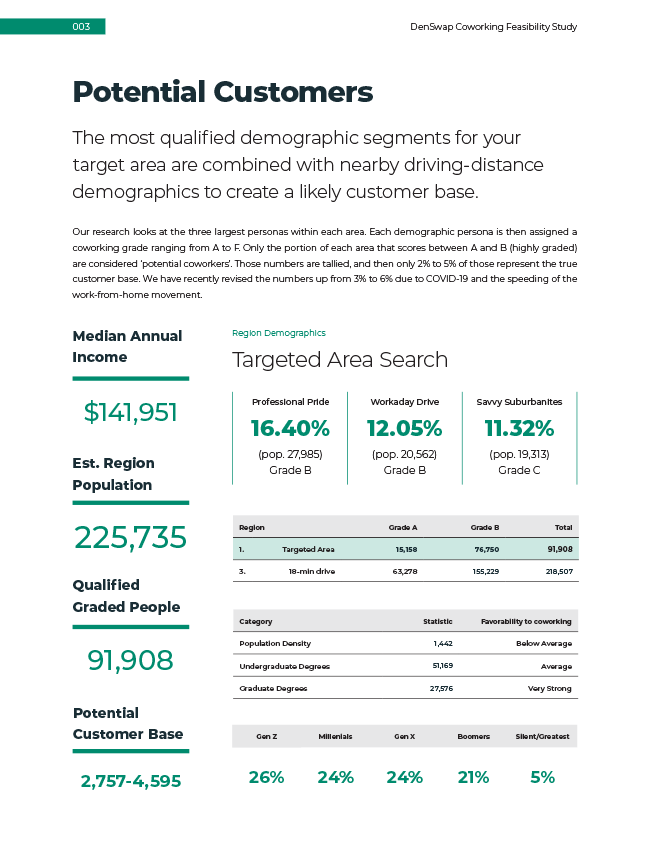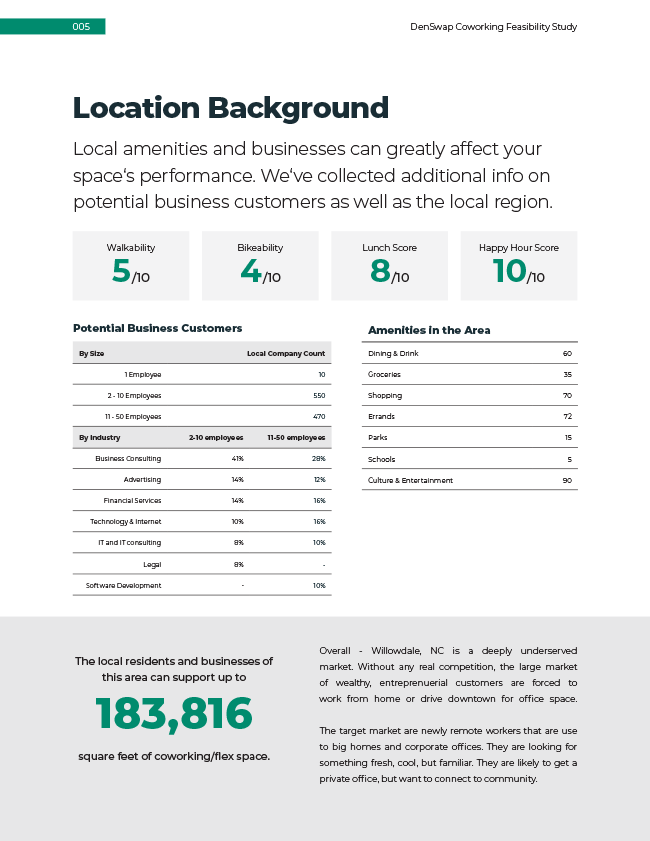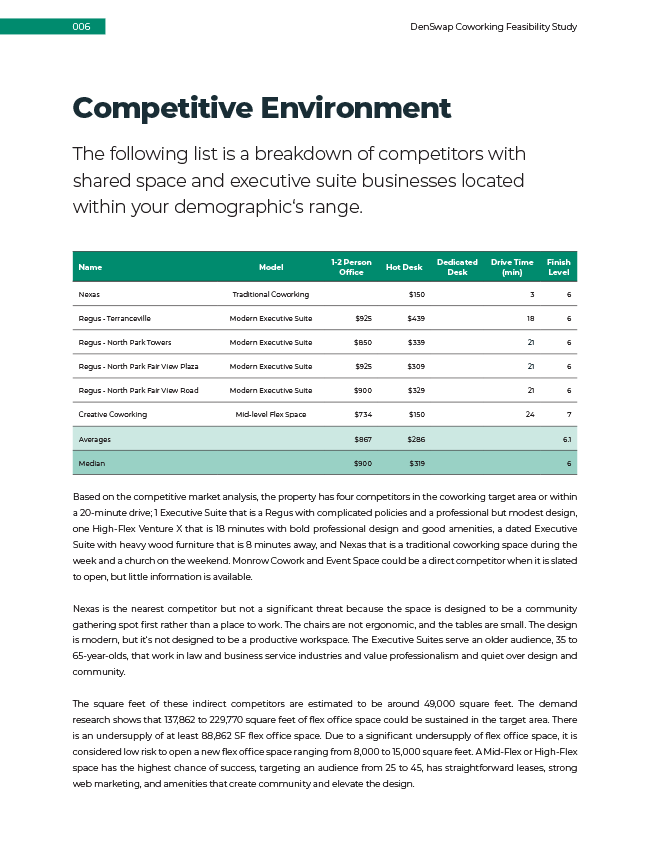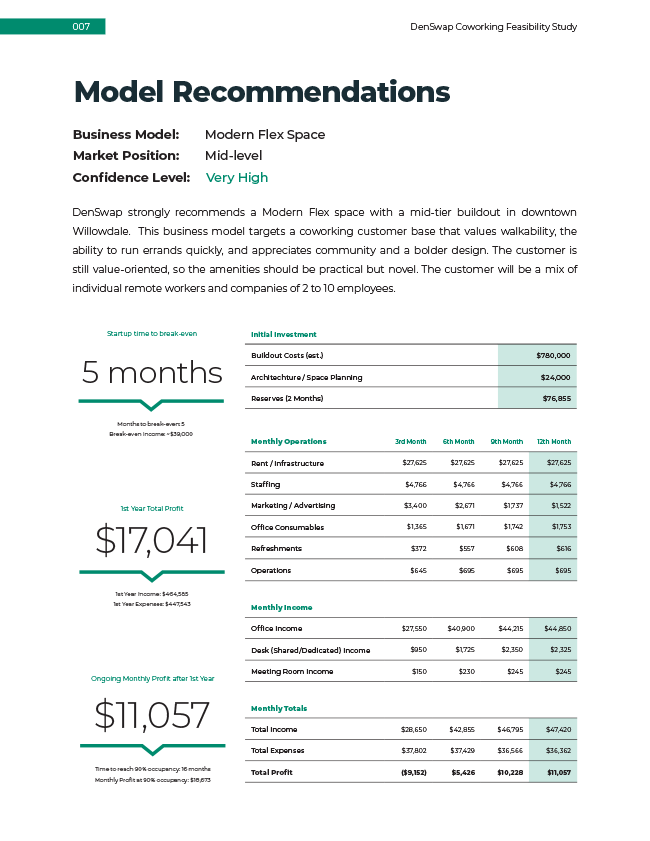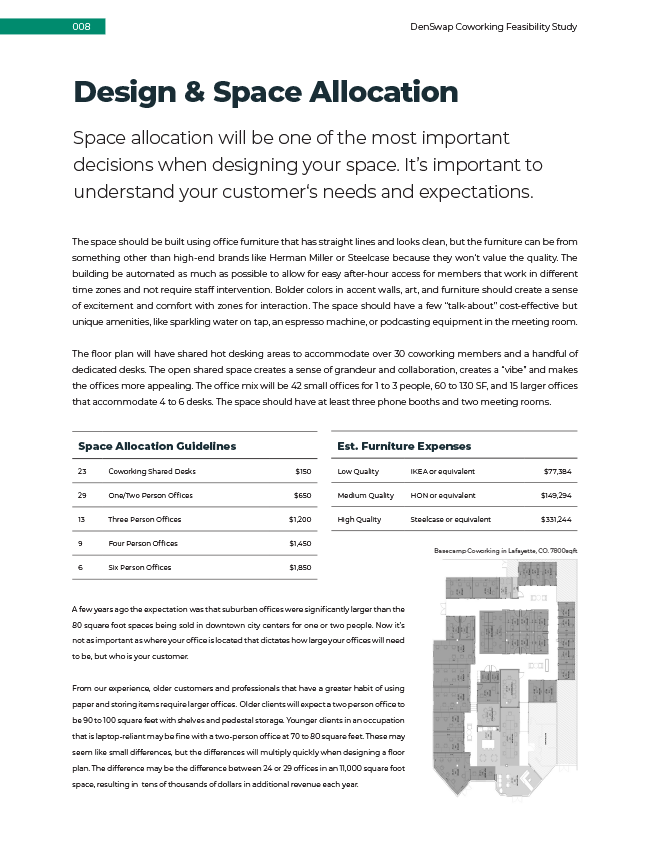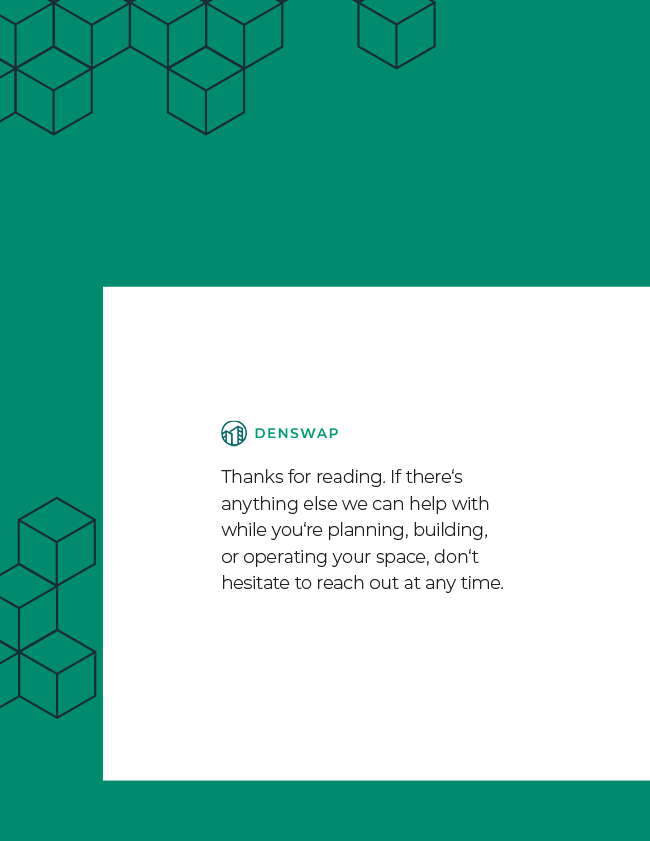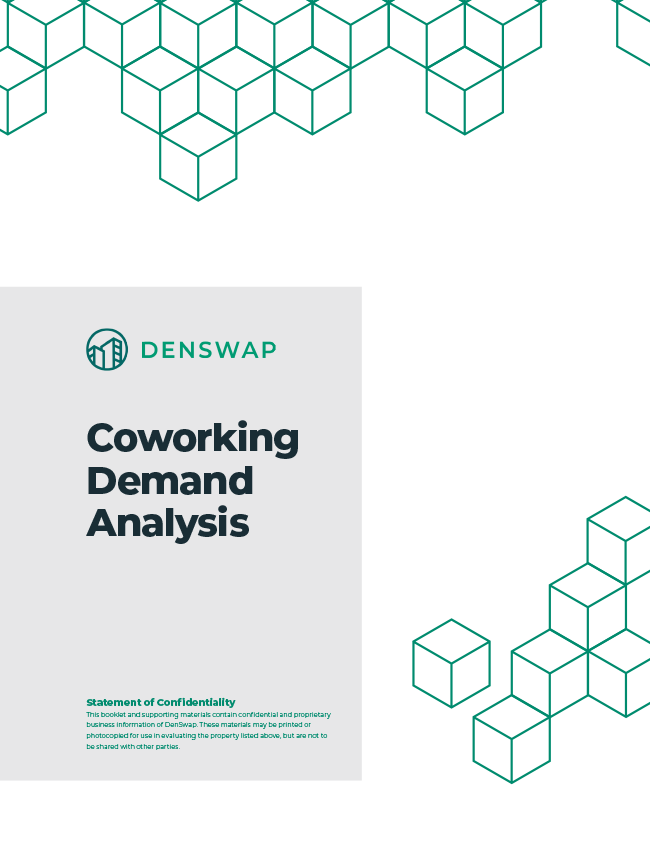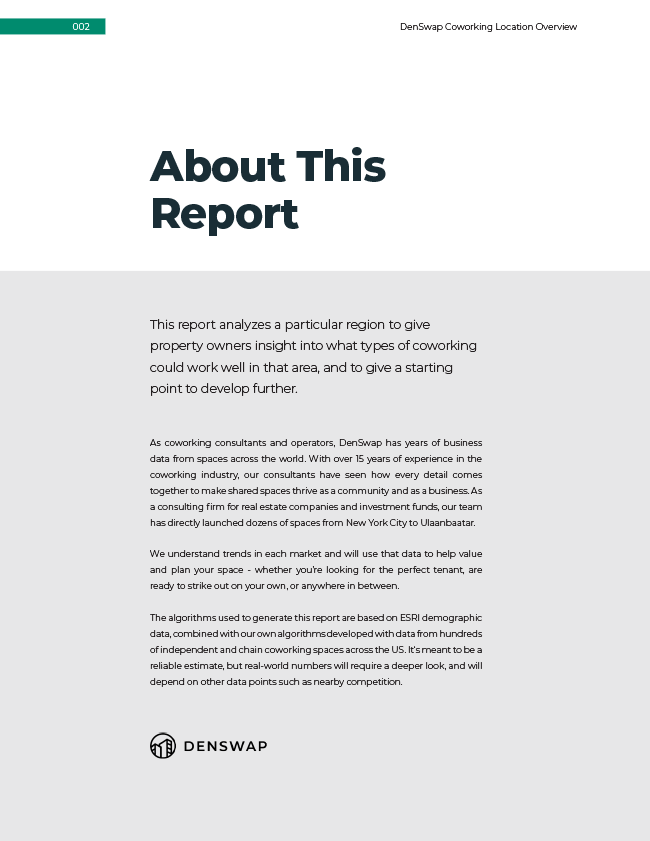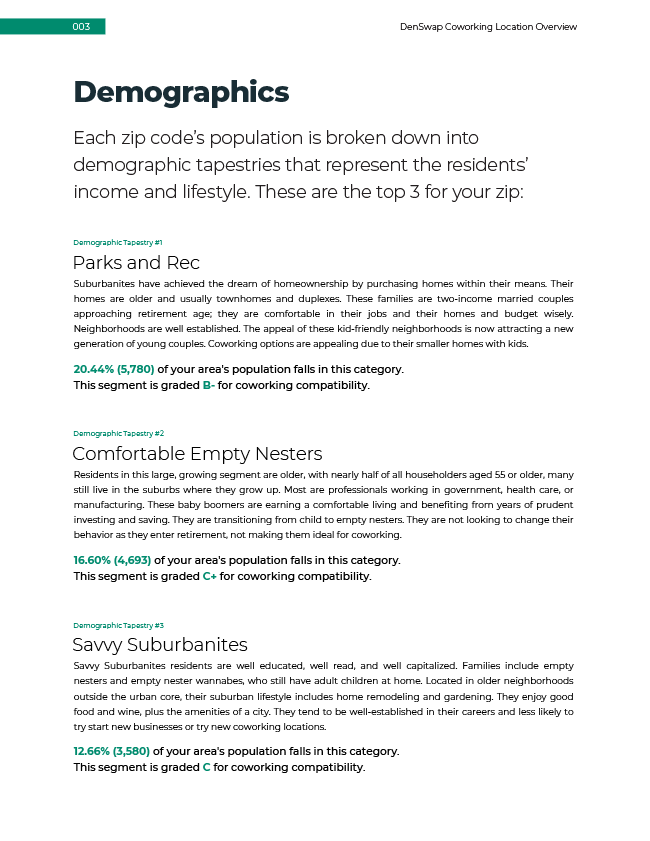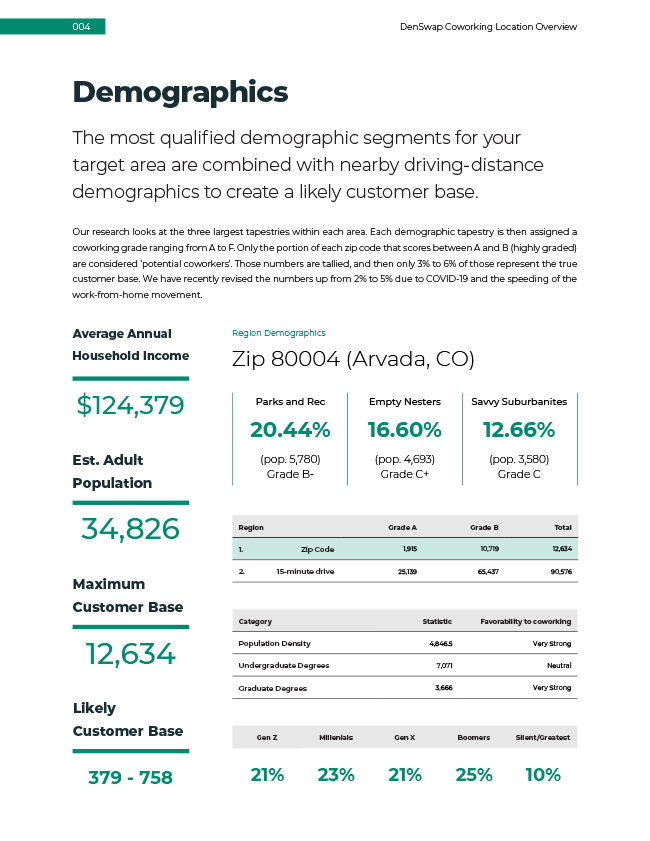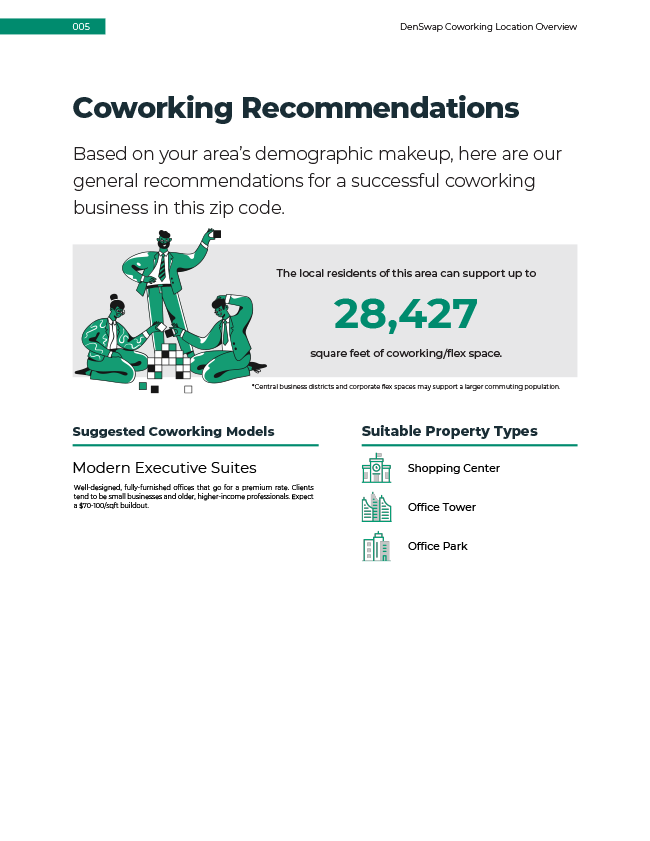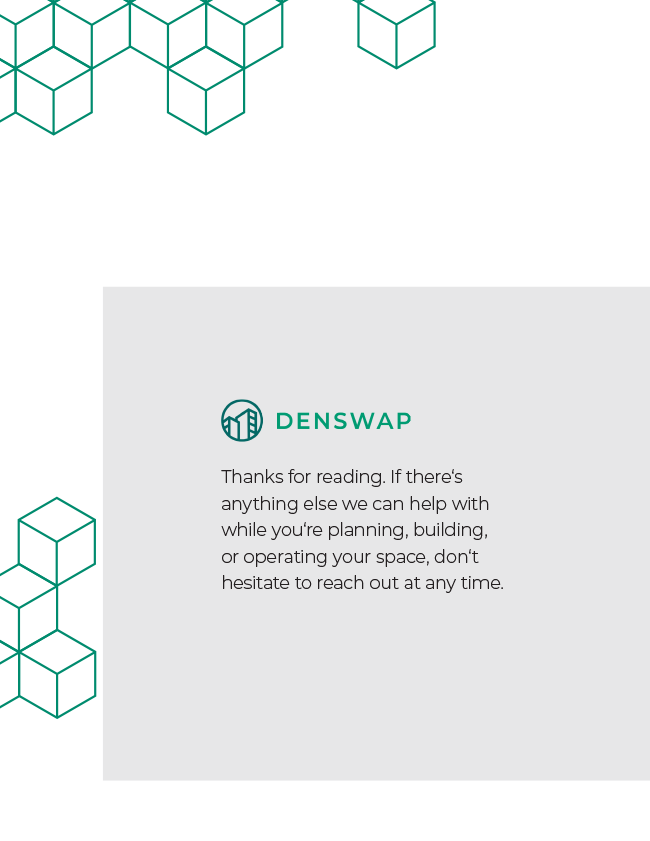How to expand to multiple coworking locations
This article is meant for existing coworking owners – particularly independent owners that have one or two locations. We’re going to skip the basics (if you’re interested, the basics start in Coworking 101) and go directly into expanding your brand from one location to a successful chain or network of locations under your company.
Reaching Profitability
According to GWA’s State of the Workplace (Disclosure: DenSwap partner Craig Baute served as lead researcher for this report), the average annual profit for coworking spaces is just $4/sqft. If your space is 5-10K sqft, there’s a clear upper limit on your maximum profit even at 100% occupancy.
At DenSwap, we often talk to coworking owners who are selling their spaces not because the business is unprofitable, but because the business isn’t profitable enough to continue operations. Many first generation coworking businesses were started as side projects – a web design agency bought 4x the space they needed for their own employees, and rented out the other 3/4ths of the space as a coworking studio. With rising competition and coworking’s focus on hospitality vs. CRE occupancy, that’s not going to cut it anymore. The industry is maturing, and the brands that will succeed are led by owners who focused on building a sustainable, profitable experience with tens of thousands of square feet over multiple locations. The ability to run a single hobby location is quickly becoming a model of the past.
The rise of regional chains
Long story short, we believe in the next ten years coworking will be dominated by regional networks – successful brands with 5-25 locations that can perfect their “secret sauce” and replicate it. Independent, one-off spaces are being squeezed out by competition, low profit margins, and structural issues. Large, investor-backed corporations such as WeWork have taken on too much risk in order to gain market share while unable to replicate sustainable locations.
While we believe there will be successful outliers at either end of the spectrum, the majority of profitable companies on the bell curve will be midsize chains who are able to slowly and steadily grow while perfecting their business model and optimizing cashflow as they add locations one-by-one.
In February 2020, there were 765, or 15.6% of coworking locations fit this category, and are expected to grow post-COVID as WeWork and independent spaces shut down. If you’re an independent owner or a regional chain on the rise, we want to help you grow sustainably and consolidate coworking under your brand.
Strategy 101 (Your First Space)
OK. If you want to build a sustainable brand, you’re going to need to expand past your first or second space. What next?
When you first started your space, it likely took a while to reach that first plateau of stability. Most coworking spaces take two years to reach profitability. That’s not something that happens automatically – owners have to identify and solve critical issues in their own space (use of square footage, billing, processes, etc) and issues in their own skillset (marketing, conflict management, team leadership, and so on.) Take advantage of that time spent learning difficult lessons and systematize it into written, replicable processes you can use to expand down the road.
Use your first location as a staging ground for the rest of your brand’s expansion, and test out concepts early on while the stakes are relatively low. You’re developing your “secret sauce” – the community rhythms that provide a uniquely wonderful experience and build loyalty among your members. For example, at one of our first coworking spots, we established Friday lunches where most of the community goes to a local restaurant (the community debates and votes on our Slack channel.) It’s popular, builds friendships, and brings in new members. As we look at expansion spaces, we specifically take a look at the surrounding restaurants to make sure we can replicate those lunches. The community-oriented friendliness, built in part by Friday lunches, is part of the “secret sauce” that our communities are attracted to and fuels expansion.
Your Second Space
OK. You’ve got your first space. It’s profitable, you’ve tried out some ideas and have a good idea what works, and you’ve gotten honest feedback from your members to validate the concept. What next? It’s time to expand to a new location. The primary goal of your second location is to test the replication: – does your “secret sauce” and operations management work with a new community and in a new location? It’s not going to be a perfect transition, but just like your first location you and the brandl will evolve into something sustainable.
The first challenge: personal growth. You might have balance problems – all of a sudden the first location feels neglected because you’re spending too much time at the new space. Multiple locations means multiple community managers – you can’t owner/operate them all. In fact, your role will be increasing CEO-like at the expense of the day-to-day community oversight. There’s a different set of skills required for starting a space, operating a space, and running a multi-location brand, and developing the management and oversight skills needed to move to the next level will take practice.
You might find your secret sauce needs tweaking – your first space might have been a community-oriented space with lots of open space and nearby restaurants, but an office-heavy location in the suburbs doesn’t respond to Friday lunches. Do you adapt the secret sauce, or do you sell your second location on DenSwap and try again with the lessons you’ve learned?

Moving on from here…
Once you’ve established two successful locations, you’ve grown as an entrepreneur and owner, and you’ve got a proven business model and criteria for success – it’s time to step on the gas and expand. In order to fuel rapid expansion, purchasing independent coworking spaces from owners that doesn’t make it past the first location is a solid choice – you can often save on buildout costs and inherit a community to build off of.

